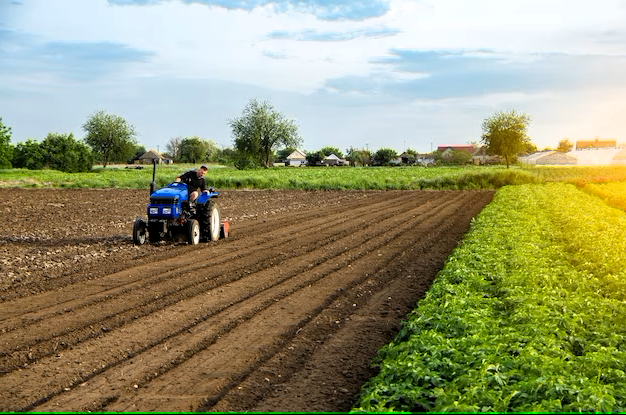In the quest for more sustainable agricultural practices, community gardening is becoming a powerful alternative to large-scale commercial farming. This grassroots approach to growing food offers a range of environmental, social, and economic benefits that make it a more sustainable option. Through community gardening, people are not only able to enjoy fresh produce but also contribute to a positive impact on the planet and their local communities. Here’s a deep dive into how community gardening outshines large-scale commercial farming in terms of sustainability and why it’s catching on as a vital solution in today’s eco-conscious world.
Empowering Local Food Production
One of the core advantages of community gardening is its hyper-local nature, which directly supports sustainable food production. Community gardens are typically created and maintained by local residents who grow fruits, vegetables, and herbs in small plots of land within urban or suburban areas. Unlike large-scale farming operations, which rely heavily on transportation and distribution networks to bring food to the consumer, community gardening minimizes the distance between where food is grown and where it’s consumed.
This proximity offers several sustainability benefits:
- Reduction in Carbon Emissions: Commercial farms produce vast amounts of food that often travel hundreds or even thousands of miles to reach consumers. Transportation is a significant contributor to greenhouse gas emissions. Community gardens, by contrast, eliminate the need for long-haul transportation, thus reducing the carbon footprint associated with food production.
- Less Packaging Waste: Community gardening often doesn’t require the extensive packaging that commercial farms use to preserve produce for long transport times. This reduction in packaging waste contributes to lower pollution levels and reduces the demand for plastic and other non-recyclable materials.
- Fresher, Nutrient-Rich Produce: Food grown locally is harvested at peak ripeness, ensuring that nutrients remain intact. This is a marked difference from commercial farming, where produce is often harvested early and transported for extended periods, diminishing its nutritional value by the time it reaches consumers.
Encouraging Biodiversity and Healthy Ecosystems
Commercial farming is often associated with monoculture practices, where vast tracts of land are dedicated to growing a single crop. While this approach increases efficiency, it can harm biodiversity and result in soil degradation, pest infestations, and the loss of native plants and wildlife. On the other hand, community gardening promotes biodiversity in several ways.
- Polyculture and Crop Diversity: In community gardens, people grow a diverse range of crops, often choosing heritage and heirloom varieties that might not be economically viable on a large scale. This variety attracts beneficial insects, supports pollinators like bees and butterflies, and encourages healthy plant ecosystems.
- No Harmful Pesticides: Community gardeners often rely on organic gardening practices, using natural pest control methods rather than the chemical pesticides and herbicides that large-scale farms commonly use. These chemicals can seep into the soil and groundwater, posing risks to surrounding ecosystems. With organic pest control, community gardens contribute to healthier soil and cleaner water sources.
- Soil Health and Regeneration: Small-scale gardening allows for natural composting and crop rotation, which contribute to soil fertility and health. Healthy soil is crucial for carbon sequestration, where carbon dioxide is stored in the ground, helping reduce greenhouse gases in the atmosphere. In contrast, large-scale farming often leads to soil depletion and erosion due to continuous cropping and the heavy use of chemical fertilizers.
Lowering Water Consumption and Waste
Water usage is one of the biggest environmental concerns in agriculture. Industrial-scale farming consumes enormous amounts of water for irrigation, often relying on unsustainable sources. Community gardening, in comparison, tends to be much more efficient in water use.
- Use of Rainwater and Drip Irrigation: Many community gardens incorporate water-saving techniques, such as rainwater harvesting and drip irrigation, which minimize water waste. By directly watering plant roots, these methods allow plants to absorb water more effectively, reducing the need for excess irrigation.
- Community-Driven Water Conservation: Gardeners in community plots are typically more mindful of water usage because they’re directly involved in maintaining the garden. This community-driven approach to water conservation creates a mindset of stewardship and responsibility, encouraging efficient water use over time.
- Less Water Pollution: Without the runoff from pesticides and fertilizers commonly seen in large-scale farming, community gardens produce cleaner water runoff. This minimizes the risk of polluting nearby rivers and lakes, supporting local aquatic ecosystems and making these urban green spaces environmentally friendly.
Building Resilient Communities and Reducing Food Insecurity
Community gardening plays a crucial role in fostering stronger, more resilient communities, offering solutions to food insecurity and social isolation. Unlike large commercial farms, community gardens are built, maintained, and enjoyed by local residents who share a vested interest in their success.
- Accessible Fresh Produce for Low-Income Communities: Community gardens are often located in urban areas where access to fresh, affordable produce may be limited. For low-income families, community gardens provide a much-needed source of nutritious food, which might otherwise be financially out of reach. Studies show that areas with accessible green spaces like community gardens experience lower rates of food insecurity.
- Community Bonding and Cooperation: The collaborative nature of community gardening brings people together from different backgrounds and encourages cooperation. These gardens become social hubs where people share gardening tips, recipes, and community values. This collaborative model strengthens community bonds, creating social networks that offer support during times of need.
- Educational Opportunities: Community gardens also provide a valuable educational platform. Schools and community centers often organize workshops and activities for children and adults alike, teaching them the importance of sustainability, food production, and healthy eating. Large-scale farming doesn’t offer this level of community education and engagement, making community gardens a uniquely beneficial solution for spreading environmental awareness.
Reducing Dependence on Industrial Agriculture
With the rise of community gardening, there’s an increasing shift towards self-sufficiency and reduced dependency on industrial agriculture. This shift brings a number of sustainability benefits, which could have a long-term positive impact on the environment.
- Alleviating Pressure on Commercial Farms: Large-scale commercial farms focus on meeting high demand for staple crops, often at the expense of environmental health. When communities grow their own food, even on a small scale, it reduces the demand on these commercial farms. This, in turn, alleviates the need for intensive agricultural practices that harm ecosystems and contribute to climate change.
- Increased Food Security: By having direct access to locally grown food, communities are less vulnerable to supply chain disruptions. Recent years have shown how unpredictable food supplies can be, whether due to pandemics, extreme weather, or global conflicts. Community gardens make food security more localized and stable, reducing reliance on an unpredictable global supply chain.
- Promoting Sustainable Lifestyles: People who participate in community gardening tend to adopt more sustainable lifestyles overall. Gardening fosters an appreciation for nature and a deeper understanding of where food comes from, encouraging people to make more eco-friendly choices in other areas of their lives. This ripple effect can extend to recycling, reducing plastic use, and embracing other green habits that contribute to a healthier planet.
Economic Benefits Without Heavy Investments
While large-scale commercial farms require extensive financial investment in equipment, land, and infrastructure, community gardening offers economic benefits without the same financial overhead. This makes it an accessible and economically sustainable choice.
- Lower Start-Up and Maintenance Costs: Starting a community garden requires minimal investment compared to a commercial farm. Basic gardening tools, seeds, and compost are often sufficient to get a community garden going. These low start-up costs make it feasible for individuals and communities with limited budgets to participate in local food production.
- Job Creation and Local Economy Boost: While community gardens may not provide large-scale employment, they still create opportunities for local job growth. Garden coordinators, educators, and suppliers of gardening materials all benefit from a thriving community gardening movement.
- Reducing Food Expenses: For community gardeners, growing their own food reduces grocery expenses, which can be particularly beneficial during times of inflation. Not only does this help families save money, but it also promotes economic resilience in the face of rising food costs.
Making Community Gardening More Sustainable
While community gardening is inherently more sustainable than large-scale commercial farming, there’s always room for improvement. By implementing certain practices, community gardens can become even more beneficial to both the environment and the community.
- Expanding Organic and Permaculture Practices: Many community gardens already incorporate organic methods, but adopting permaculture principles could further enhance sustainability. This might include using composting toilets, mulching with local materials, or planting native species that require less maintenance.
- Developing Seed Saving Programs: By saving seeds from their harvest, community gardeners can reduce their dependence on store-bought seeds. This practice also helps preserve heirloom varieties, which are often more resilient to local pests and climate conditions than commercial hybrids.
- Enhancing Community Education Initiatives: The more that community gardeners understand sustainable practices, the more effective they’ll be at reducing their environmental footprint. Community education initiatives can include workshops on composting, rainwater collection, soil conservation, and organic pest management. As knowledge spreads within the community, so does the capacity for greater sustainability.
Conclusion: Cultivating a Greener Future
Community gardening offers a clear, sustainable alternative to the high-impact methods of large-scale commercial farming. By promoting local food production, encouraging biodiversity, conserving water, and reducing dependence on industrial agriculture, community gardening supports both environmental and community health. Through shared efforts, education, and a commitment to local resilience, community gardening creates a ripple effect that extends well beyond the garden plot itself.
As we move forward in a world where sustainability is paramount, the role of community gardening will only become more essential. It empowers people to take control of their food sources, nurtures social connections, and ensures that our food systems are more resilient and less damaging to the planet. Community gardens are not only a means of producing food but also a model of sustainable, collaborative living. By embracing community gardening, we can cultivate a greener, healthier future—one garden at a time.

